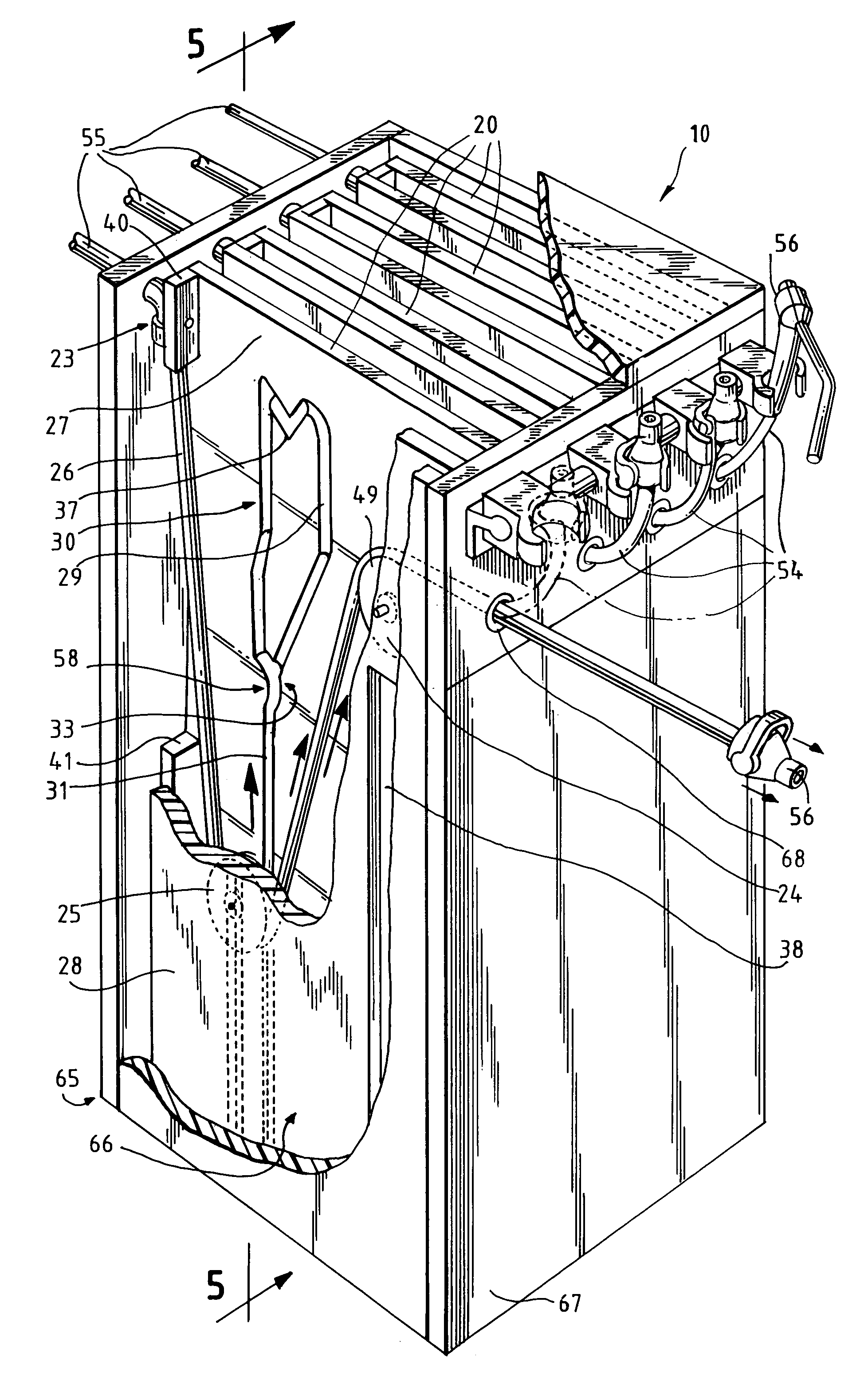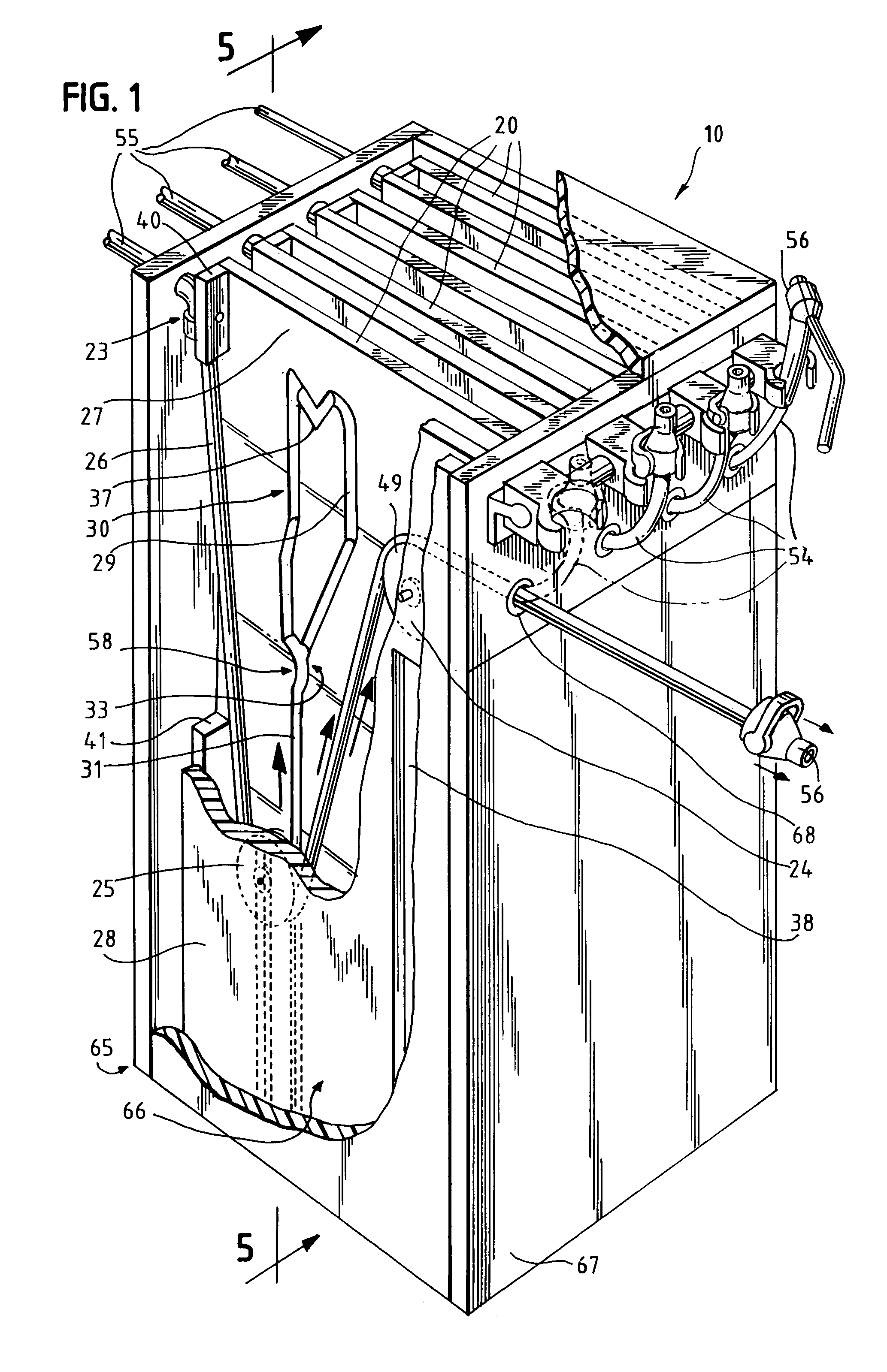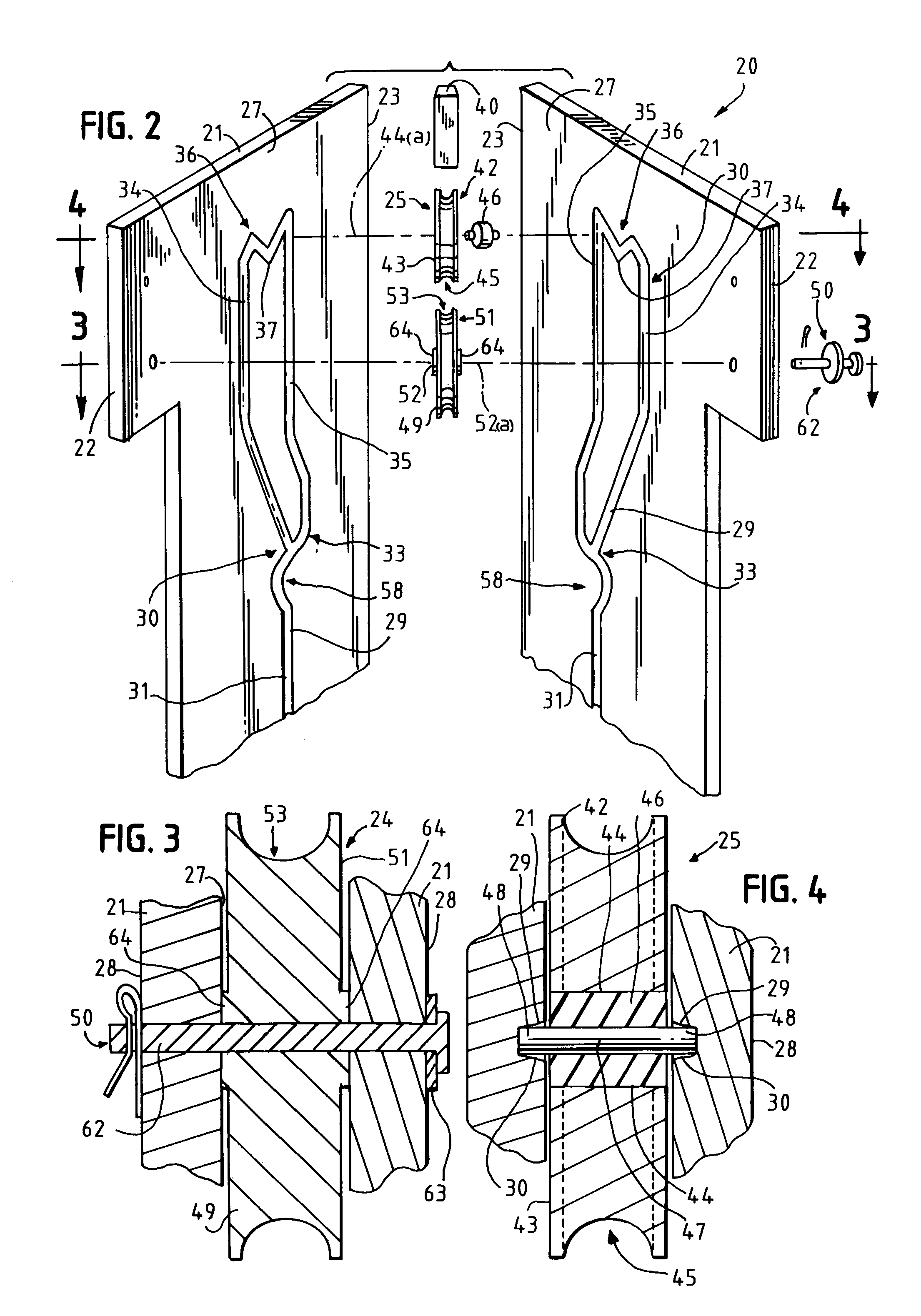Extendable and retractable utility line system
a technology of utility lines and hoses, applied in the field of hoses for selective extending and retracting utility lines, can solve the problems of unsightly appearance of utility lines, potential damage and entanglement, and cinch-less or pinch-less braking structure, and achieve the effect of effectively braking the utility lin
- Summary
- Abstract
- Description
- Claims
- Application Information
AI Technical Summary
Benefits of technology
Problems solved by technology
Method used
Image
Examples
Embodiment Construction
[0040]Referring now to the drawings, the preferred embodiment of the present invention concerns a utility line extension and retraction system or utility line extension and retraction cassette assembly for enabling users thereof to selectively extend a utility line for utility line use and retract the utility line for utility line storage. The utility line extension and retraction system 10 is generally illustrated and referenced in FIG. 1. It will be seen from an inspection of FIG. 1 that utility line extension and retraction system 10 essentially comprises a plurality of utility line cassettes 20 or cassette assemblies, which utility line cassette 20 or cassette assembly has further been illustrated and referenced in FIGS. 2, and 5–10. Each utility line cassette 20 preferably comprises two laterally-spaced, pulley-receiving walls 21 as illustrated and referenced in FIGS. 2–10; spacer means intermediate the pulley-receiving walls; an anterior line outlet end 22 as illustrated and r...
PUM
 Login to View More
Login to View More Abstract
Description
Claims
Application Information
 Login to View More
Login to View More - R&D
- Intellectual Property
- Life Sciences
- Materials
- Tech Scout
- Unparalleled Data Quality
- Higher Quality Content
- 60% Fewer Hallucinations
Browse by: Latest US Patents, China's latest patents, Technical Efficacy Thesaurus, Application Domain, Technology Topic, Popular Technical Reports.
© 2025 PatSnap. All rights reserved.Legal|Privacy policy|Modern Slavery Act Transparency Statement|Sitemap|About US| Contact US: help@patsnap.com



